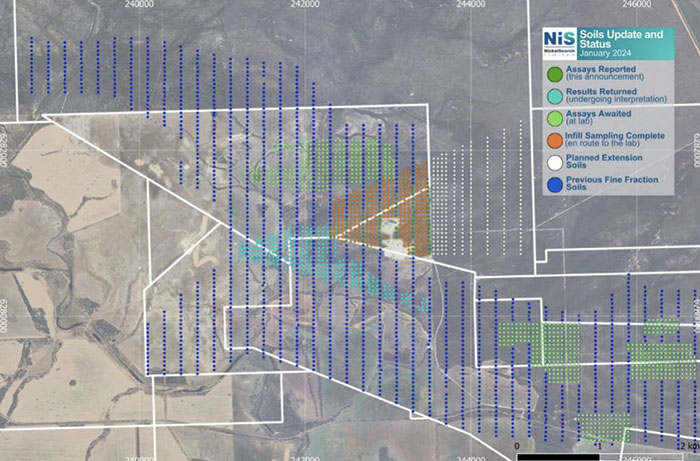NickelSearch closing in on Carlingup’s lithium prospectivity

The discovery of significant LCT anomalies shows that NickelSearch is making good progress on its lithium hunt at Carlingup. Pic: via Getty Images.
- Sampling identifies LCT anomalies north of the quarry area at Carlingup
- Work underway to expose quarry floor to identify source of high-grade lithium
- Further regional exploration underway at 28 areas of interest
Special Report: Soil and rock chip sampling by NickelSearch has identified significant lithium-caesium-tantalum anomalies close to the quarry area at its Carlingup project near Ravensthorpe, WA.
The 108km2 Carlingup project sits within the Ravensthorpe greenstone belt – a highly prospective region for nickel sulphide deposits on the southern margin of the Archean Yilgarn Craton.
Notably, the corridor also hosts IGO’s (ASX:IGO) Forrestania nickel mining complex and is adjacent to First Quantum Minerals’ laterite mine, the Ravensthorpe Nickel Operations (RNO).
Despite this nickel prospectivity and an existing 155,000t nickel resource, NickelSearch (ASX:NIS) is focusing its efforts on proving up the lithium prospectivity at the site.
This includes carrying out soil sampling across the areas immediately surrounding the quarry with assaying of the 72 samples carried out using the Ultrafine analysis technique by LabWest.

Pegmatite anomalies identified
Assaying has now defined a discrete area of LCT pegmatite-related anomalism immediately to the north of the quarry pit.
This work returned a peak value of 139 parts per million (ppm) lithium over an average background of 37ppm (about 3.8x background) while tantalum shows a similar level of anomalism with a peak of 17 parts per billion over an average background of 4.8ppb, or about 3.5x background.
Meanwhile, caesium and tin both show peak values of about 2.3–2.4x higher than the average background levels.
NIS says the tight spatial association of anomalous lithium-caesium-tantalum-tin samples is encouraging as this is indicative of mineralisation in a LCT pegmatite system.
The anomaly appears to trend to the north-east, parallel to, but south, of a major bounding structure.
North-east oriented structures, often intruded by dolerite, are commonly associated with pegmatite emplacement in the Ravensthorpe area with a notable example being Mt Cattlin.
“The ultrafine soils have defined a north-east trending zone of anomalism to the north of the quarry, with LCT indicators well above background. Infill sampling has recently been completed to better constrain the anomalies,” managing director Nicole Duncan said.
“We have also partially completed exposing the quarry floor, however equipment issues have slowed progress. New equipment is planned to be brought in, to expand the area of exposure, aimed at identifying the source of the high-grade lithium within spodumene-bearing pegmatites that was confirmed in 2023.
“It is very encouraging to see these results, which show us that the quarry is located adjacent to an anomalous trend of LCT pegmatite-related minerals.”
The road ahead
NIS is undertaking analysis of assays from rock chip samples and in-fill soil sampling over the four high-priority areas of geochemical interest surrounding the quarry to the north, west and south.
It is also continuing work to expose the bedrock geology at the quarry surface under access permits from the WA Mining Warden to re-enter the quarry and the priority target areas while awaiting assays from rock chips and soil samples taken during regional lithium exploration.
Further regional lithium exploration is continuing with additional work programs across the 28 areas of interest identified to date within the Carlingup tenements while desktop analysis is underway to inform the planning needed to accelerate lithium exploration programs at the newly-acquired tenements at Ravensthorpe to define drill-ready targets in H1 2024.
This article was developed in collaboration with NickelSearch, a Stockhead advertiser at the time of publishing.
This article does not constitute financial product advice. You should consider obtaining independent advice before making any financial decisions.
Related Topics

UNLOCK INSIGHTS
Discover the untold stories of emerging ASX stocks.
Daily news and expert analysis, it's free to subscribe.
By proceeding, you confirm you understand that we handle personal information in accordance with our Privacy Policy.








